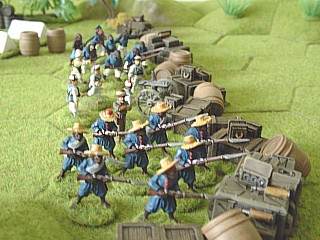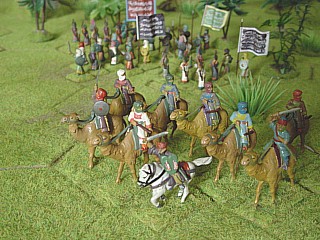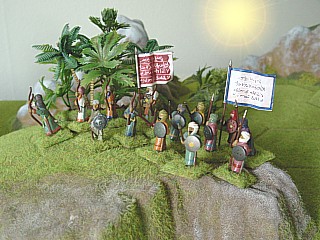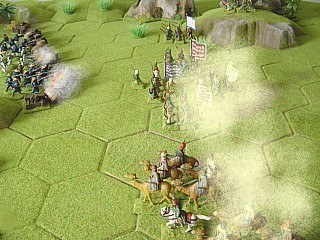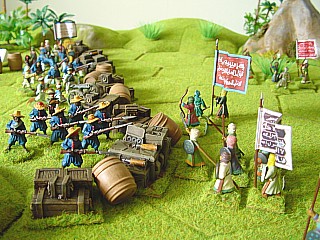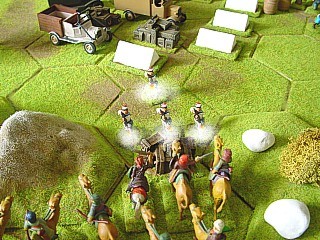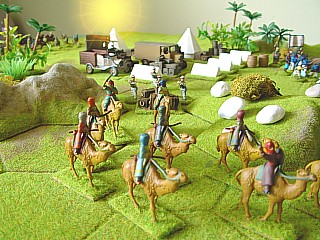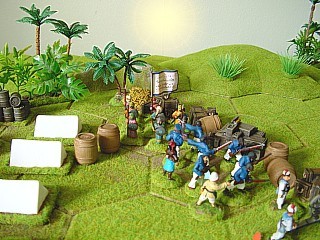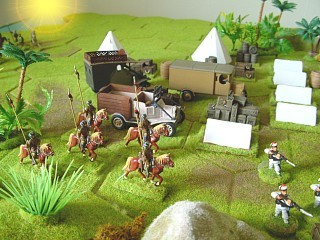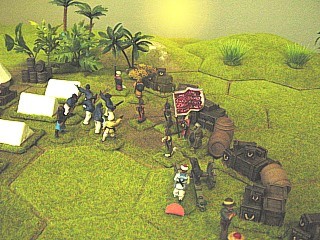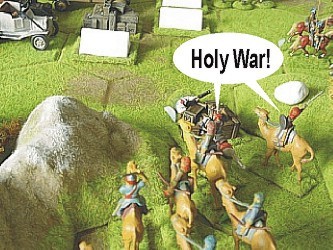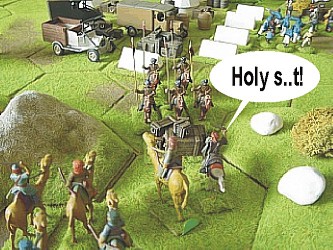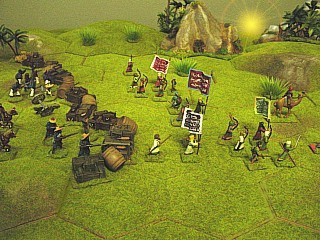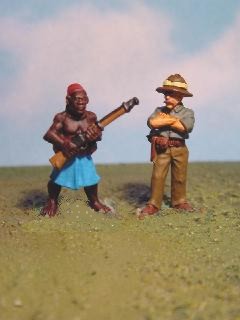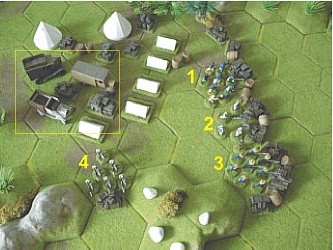
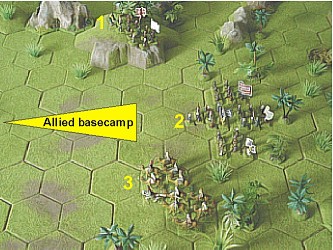
- (1): 8 fig B-class Belgian "Brigade Navale" with a sergeant.
- (2) A-class French "Infanterie de Marine" MG.
- (3) 8 fig B-class Belgian askari.
- (4) 6 fig A-class French "Infanterie de Marine".
The officer commanding the camp (Cpt Eduard Geudens) is with units 2 & 3.
The
"Devils' Own" Arab raiding force is 8 units strong:
(1) One 8 fig C-class archer unit & one 8 fig C-class spear unit.
(2) Four 8 fig units (2 B-class spearmen & 2 C-class archers), forming
a "company", commanded by a tribal overlord on
foot.
Unit colours (see rules)
for 1,2 & 3 are mixed red-green-blue.
(3) Two 5 fig units of B-class camel archers, forming a "platoon",
commanded by a tribal chieftain on horseback.
Scenario
objectives/victory conditions: The
three (immobile) trucks in the yellow rectangle have to be taken by the
Arabs in order to "overrun the camp" and win the battle. However
(contrary to the standard Afriboria rules), Arab units entering the ZOC
of a defending allied unit must stop and battle. The hills shown at the
bottom of the picture (to the left and right of unit "4") are
impassable terrain.
The
Arabs must retire from the field (= allied victory) if they have not been
able to take their objectives by turn 20 (=10 turns for each side).
